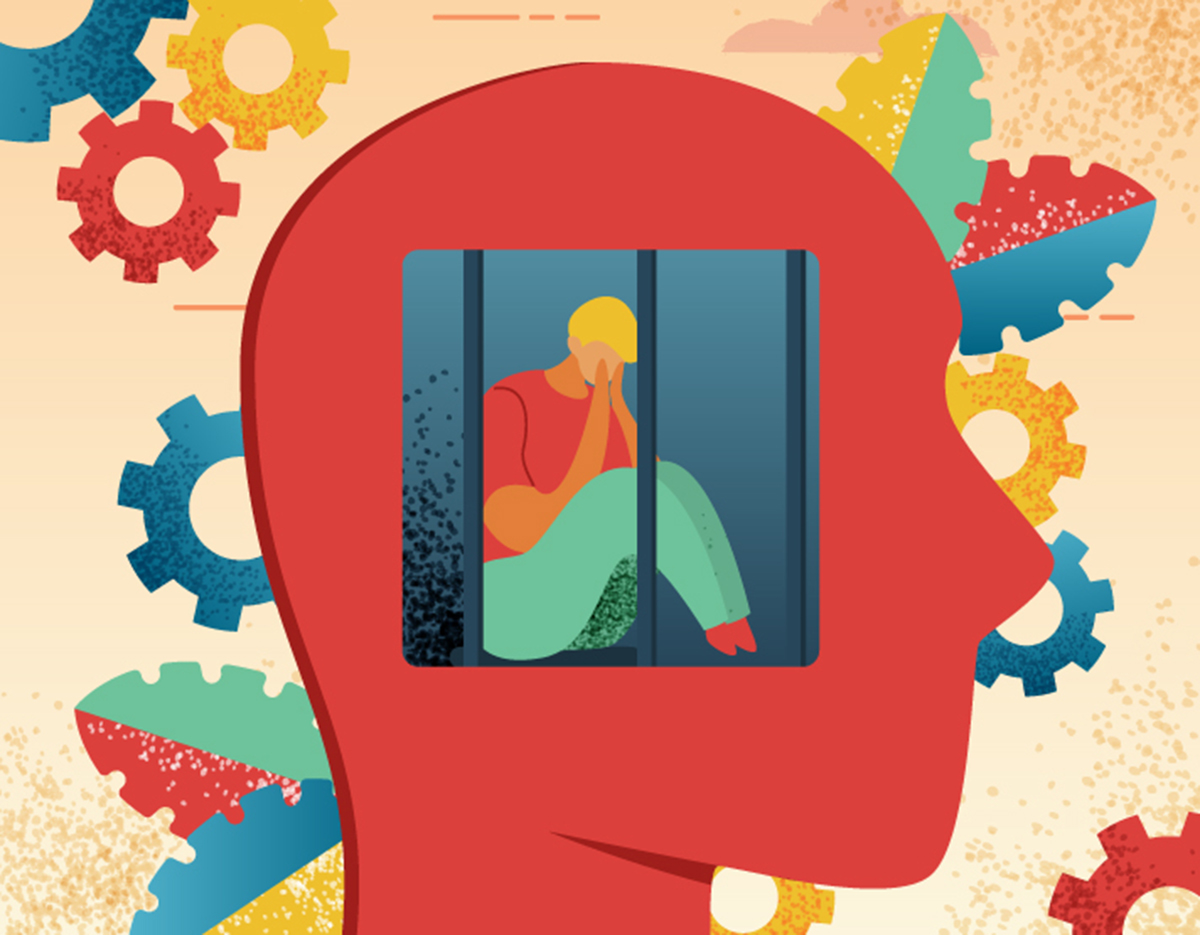Anxiety is commonly co-morbid with other mental health conditions and can also be a feature of other conditions, including health problems. This can be challenging in terms of identification/diagnosis, treatment outcomes, and long-term prognosis.

Diagnostic issues
Anxiety is a normal human emotion but it is also a symptomatic feature of other psychiatric disorders. Therefore, mental health professionals are tasked with deciding what best accounts for the individual's symptoms. Just because anxiety symptoms are present, this does not necessarily mean the person has an anxiety disorder. To receive an anxiety diagnosis, anxiety must be the key and primary feature.
The clinical presentations of co-morbid conditions render each more complex. Symptoms of disorders can fluctuate over time and a diagnostic interview is just a small snapshot in time which may not actually reveal the true extent of the problem or even which disorder is primary. Several reports have shown that depressed individuals who have co-morbid anxiety symptoms that are regarded as sub-threshold according to psychometric measures have different clinical features, worse prognosis, and a greater likelihood of adverse reactions than depressed individuals without co-morbid anxiety. Furthermore, different cultures use different discourses to explain their mental distress (such as complaining more about physical symptoms, for example, rather than psychological ones) so this can further confound diagnosis in co-morbidity.
Personality disorders are a good example of disorders where there can be confusion about diagnosis. Personality disorders cover a range of conditions where the individual has a long-standing inflexible and dysfunctional way of interacting with the world around them; but it is most evident in the context of interpersonal relationships where the behaviors can be there most stark. It is quite possible to have both a personality disorder and an anxiety disorder but also the potential for misdiagnoses is rife.
For example, a person with an avoidant personality disorder would struggle with inadequacy, socially reservation, and marked sensitivity to negative criticism; they will regard themselves as socially incapable or inadequate, dislikeable and inferior to others. Like those with social anxiety disorder, they are often afraid of being embarrassed or ridiculed in social situations. Because of these common features, it has been argued that both disorders are simply part of the same spectrum of difficulties that just differ in severity. Interestingly, co-morbidity rates between social phobia and avoidant personality disorder ranges in research from 20-90 percent so clearly professionals disagree.
Misdiagnoses are not the only issue, the potential for worsening of symptoms when both conditions are present has been noted. Studies have purported that people with both disorders experience more anxiety, depression, and impairment in functioning, in comparison to people with either disorder on its own.
Major Depressive Disorder (MDD) commonly occurs with anxiety at a rate of as much as 50 percent. Depressed mood can be characterized by profound feelings of sadness, but people may also experience irritability or agitation. Again, it may be difficult to separate one disorder from the other when they co-occur; this is because the symptoms of one disorder might mask the other disorder and vice versa. Depressive disorders and anxiety disorders both share several symptoms such as psychomotor agitation, concentration difficulties, and sleep disturbances. However, as with personality disorders and anxiety, individuals with both conditions tend to more severe symptoms of both depression and anxiety when compared to individuals with just one. Unfortunately, this means a poorer response to treatment is likely, and the condition is likely to have an even greater impact on the person's quality of life. Research looking at patients with panic disorder and MDD who have a coexisting generalized anxiety disorder (GAD) supports this view as they found that they tend to have more severe symptoms and a less favorable outcome long term. GAD and MDD appear to have particularly strong links and twin study data indicates that the conditions share a genetic basis.
Generalized anxiety disorder seems to be especially co-morbid with other anxiety, depressive and other disorders. Some investigators have suggested therefore, that GAD needs to be regarded less like a disorder but more as a personality vulnerability for other conditions or alternatively that the strong prevalence of co-morbidity confirms the view that the conditions share a common cause.
Panic disorder is another condition which seems most commonly co-occurring with anxiety. One small scale study found that 98 percent of their participants with panic disorder patients had at least one other co-morbid disorder; major depressive disorder and other anxiety disorders were most common co-morbid disorders and chronic alcohol use was also prevalent.
Schizophrenia Spectrum Disorders (SSDs) are mental health conditions where people experience perceptual and cognitive difficulties such as hallucinations and delusions. These disorders cause difficulties with establishing what is real, and what is not (known as impaired reality testing). There is a link between SSDs and anxiety disorders - average co-morbidity is thought to be around 50 percent.
There are a number of other conditions commonly co-occurring with anxiety:
-
Agoraphobia
-
Body-Focused Repetitive Behaviors (skin-picking etc.)
-
Hoarding Disorder (HD)
-
Obsessive-Compulsive Disorder
-
Post-traumatic Stress Disorder
-
Separation Anxiety
-
Specific Phobias
- www.ncbi.nlm.nih.gov/pmc/articles/PMC4194005/
- www.anxietycanada.com/adults/anxiety-related-disorders
- www.mentalhelp.net/articles/anxiety-and-other-psychiatric-disorders/
- Ralevski, E., Sanislow, C.A., Grilo, C.M., Skodol, A.E., Gunderson, J.G., Tracie Shea, M., Yen, S., Bender, D.S., Zanarini, M.C., & McGlashan, T.H. (2005). Acta Psychiatrica Scandinavica, 12(3), 208-14.
- Pokos, V., & Castle, D. J. (2006). Prevalence of comorbid anxiety disorders in schizophrenia spectrum disorders: A literature review. Current Psychiatry Review 2, 285-307
- Huppert, J. D. (2009). Anxiety disorders and depression comorbidity. In: Oxford handbook of anxiety and related disorders (pp. 576-586). Antony, Martin M. (Ed.)
- Stein, Murray B. (Ed.), New York, NY, US: Oxford University Press
- www.sciencedirect.com/science/article/pii/S0193953X05702057?via%3Dihub
- www.ncbi.nlm.nih.gov/pmc/articles/PMC3520420/
- www.ncbi.nlm.nih.gov/pmc/articles/PMC4194005/
- Fava M, Rush AJ, Alpert JE, Balasubramani GK, Wisniewski SR, Carmin CN, Biggs MM, Zisook S, Leuchter A, Howland R, Warden D, Trivedi MH. Difference in treatment outcome in outpatients with anxious versus nonanxious depression: a STAR*D report.Am J Psychiatry. 2008 Mar, 165(3):342-51.
- Photo courtesy of SteadyHealth.com


Your thoughts on this